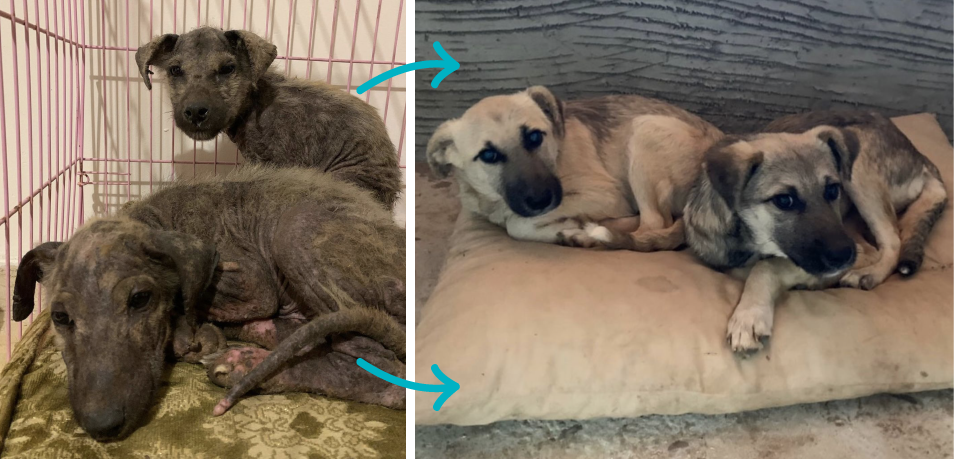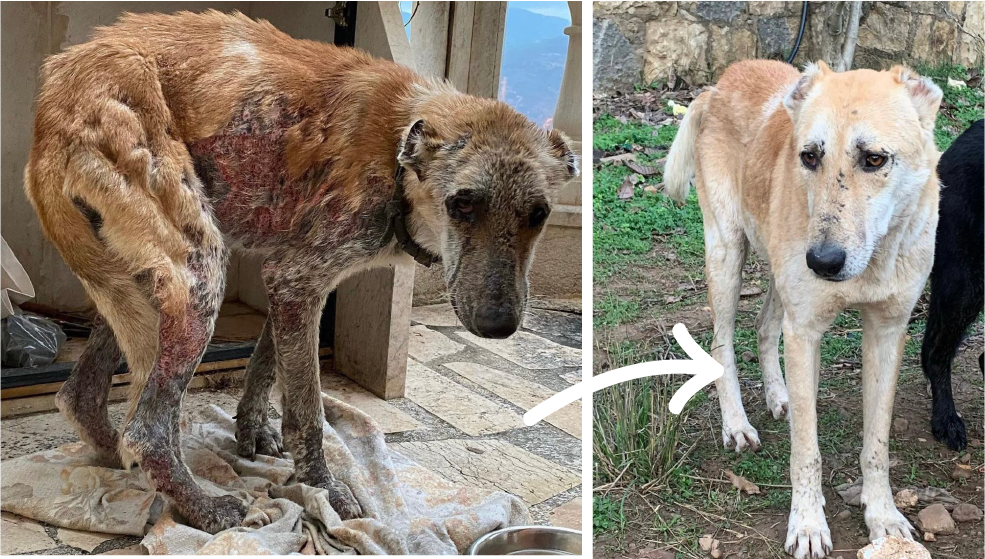Mange in dogs: separating facts from fiction
You may have heard of insults such as mangy cur or mangy mutt in the media, usually directed at misbehaving dogs. While these derogatory terms are often used for comedic effect, the disease which they refer to, colloquially known as “mange”, is anything but a laughing matter. Besides enduring immense physical discomfort, dogs with mange are commonly stigmatized and shunned, perhaps due to the physical symptoms displayed by those afflicted with this skin condition. While mange affects a large number of strays and rescues, it is still poorly understood, and thus, the general public is rife with misconceptions and myths concerning it.
Here are a few facts that may surprise you, and challenge your previously held beliefs about mange in dogs:
1. MANGE IS CAUSED BY TWO TYPES OF MITES.
Mites, close cousins of spiders and ticks, are tiny creatures which can be parasitic, and colonize their hosts’ bodies, causing irritation and inflammation. The two species which specifically affect dogs are called Demodex mites and Sarcoptes scabiei.

2. A DOG WITH MANGE IS NOT INHERENTLY “DIRTY”.
It may be hard to believe, but any dog (even your clean house dog) is susceptible to mange! In fact, even healthy and hygienic human beings can attract these mites if exposed to them. Mites, being the real culprits here, do not distinguish between “clean”, “dirty”, “stray”, or “pet”, which brings us to our next fact…
3. WITH TWO TYPES OF MITES, COME TWO TYPES OF MANGE.
It may be hard to believe, but any dog (even your clean house dog) is susceptible to mange! In fact, even healthy and hygienic human beings can attract these mites if exposed to them. Mites, being the real culprits here, do not distinguish between “clean”, “dirty”, “stray”, or “pet”, which brings us to our next fact…
4. UNTREATED MANGE MAKES A DOG’S LIFE A LIVING HELL.
While you may believe we are exaggerating, the above claim might in fact be an understatement. The afflicted dogs, in our experience, unanimously suffer a steep decline in their quality of life. Besides the obvious and more publicly known symptoms of mange, such as constant itching, scratching, and fur loss, there are many more severe, and downright painful physical manifestations. Infection, swelling, and painful crusts and lesions may occur, often causing depression, fatigue, and a loss of will to live.

5. DOGS WITH MANGE ARE NOT A LOST CAUSE.
There is hope for dogs with mange! In fact, most dogs fully recover with proper treatment and care. Interestingly, we have observed that all of our rescues previously afflicted with mange, have not only recovered physically, but also mentally. The spark in their eye returns, as if the once extinguished flame of life has been lit once more.

6. IT ALL STARTS WITH YOU.
Yes, you read that right! The way dogs with mange are treated is determined by each individual’s attitudes and actions when faced with a diseased dog. So, the next time you encounter a dog with mange, do not treat it with contempt, instead, realize that it is going through more pain and trauma than you might imagine. If you are in a position to help it, besides acting with the respect and dignity it so deserves, try to find an expert, organization, or individual who can handle it professionally and transfer it to a vet.


We hope you have found these facts useful and enlightening. If you have, please share this article with your family and friends so that we can spread the word and change prevalent attitudes towards stray dogs in Lebanon, one person at a time.
Best regards,
The GMAP Team.

